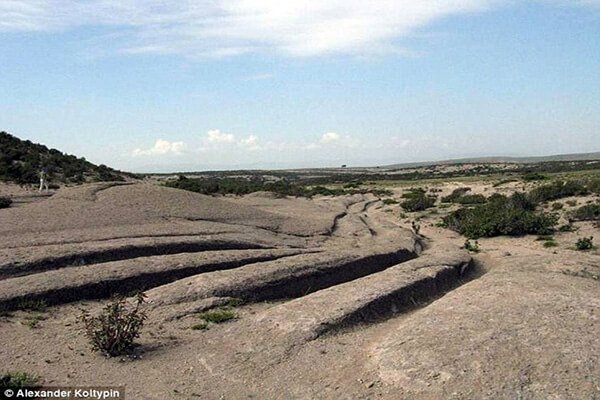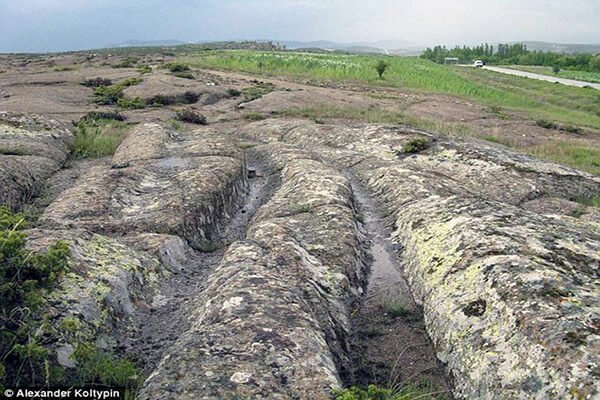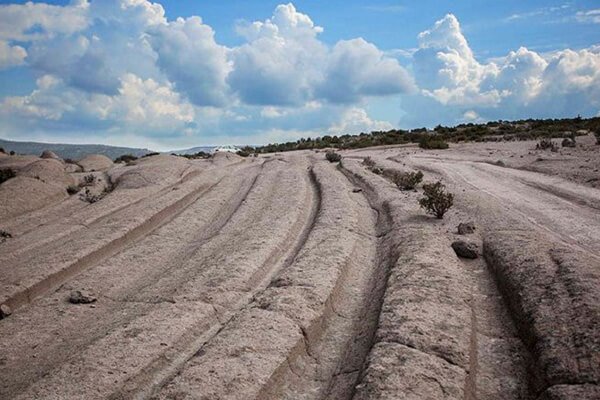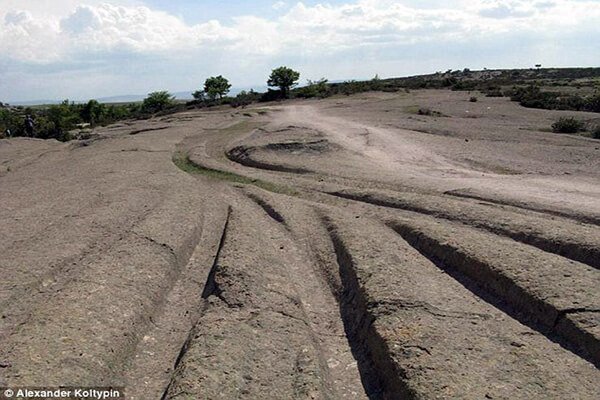Russian geologist claims to have found the 14-million-year-old ruts left by ancient terrain vehicles in Turkey

A Russian geologist has recently reached a controversial conclusion – ground marks from a certain region in Turkey were made by heavy terrain vehicles that crossed the land tens of millions of years ago.
Traces of ancient civilizations with advanced capabilities similar to our own are surfacing at a faster pace than ever before. From timeworn nuclear reactors, to advanced pipe systems dating hundreds of thousand of years back, they all gradually contribute to the puzzle of our ancient history.
This time is Turkey's turn to appear in the spotlight, for it is the place where Russian geologist Dr. Alexander Koltypin believes he has found traces of terrain vehicles used by antediluvian civilizations millions of years ago.
He suspects that heavy vehicles on wheels were drove on mushy soil or a wet surface and their imprint remained and had petrified for the ages to come, similar to the way dinosaur footprints had preserved over time.

In this case however, archaeologists are afraid to make this hypothesis known because it could shatter all classic theories about our past.
"I think we are seeing the signs of the civilization which existed before the classic creation of this world," Dr. Koltypin said. "All these rocky fields were covered with ruts left millions of years ago...we are not talking about human beings. We are dealing with some kind of cars or all-terrain vehicles."
The Russian geologist claims that he is not mistaken when dating these tracks to a period in time where only our imagination can stretch. His theory is truly challenging, but he asserts that his allegations can be proven.
As a geologist, I can certainly tell you that unknown antediluvian (before the flood) all-terrain vehicles drove around Central Turkey some 12-14 million years ago. The methodology of specifying the age of volcanic rocks is very well studied and worked out," he said.

We can suppose that ancient vehicles on wheels were drove on soft soil, maybe a wet surface, and because of their weight the ruts were so deep. Later these ruts – and all the surface around – just petrified and secured all the evidence," he added.
Koltypin believes that signs left behind by ancient vehicles are among the clues 'which prove the existence of ancient civilizations,' but which are constantly ignored by mainstream scientists. This doesn't mean that ancient humans drove them, but any other type of intelligent lifeforms which roamed the Earth in the distant past.
"Maybe the creatures of that pre-civilization were not like modern human beings.

The study has been performed by Dr. Koltypin and three colleagues during a field trip to the site in Anatolia. Koltypin is director of the Natural Science Scientific Research Center at Moscow's International Independent Ecological-Political University.
Although they couldn't find any comprehensive system for the tracks, he noted that a certain pattern in the form of symmetric distance between ruts was present, and that it very much fit the wheels of modern cars, although the tracks were too deep-seated for today's vehicles.
"The maximum depth of a rut is about three feet (one meter). On the sides of ruts there can be seen horizontal scratches, it looks like they were left by the ends of the axles used for ancient wheels. We found many ruts with such scratches," he said.

Koltypin offers a valid point of view that could very well prove to be correct, but there are other speculations in regards to this matter that should be taken into account.Other hypothesis range from an 'early irrigation system' to the 'fossilized ripple effect of slowly moving mud' and even tracks left behind by withdrawing icebergs during the last glaciation.
The most convincing idea however was expressed by a reader who said that it could be 'a railway, similar to the Diolkos wagonway, which transported boats across the Corinth isthmus in Greece during the 6th century BC. Trucks pushed by slaves ran in grooves in limestone, which provided the track element. The Diolkos operated for over 600 years.'
The Anatolia region in Turkey holds many secrets. From the underground city at Derynkuyu, to the 'Fairy Chimneys,' and also the newly-unearthed underground complex where ancient dwellers used to live permanently.
Whatever the case, we may be able to accurately understand our past only this century with all the novel technology at hand, but only if the human species will remain at peace to allow for it.
